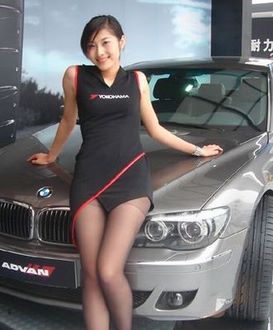
The closely-watched gauge of optimism and momentum in the all-important sector was buoyed by robust sales of late of both finished vehicles and auto parts, according to a Chinese language article in the China Youth Daily.
And the outlook for the industry continues to brighten.
Sales during the October-December period were also beneficiaries of an end-year tax benefit as well as a seasonality boost which helped boost profitability of carmakers and auto component producers.
Loss-making producers and failure rates of China’s relatively crowded and fragmented auto market also fell on a comparative basis, suggesting that the industry sentiment index was an accurate barometer of gauging the climate for players in the sector.
And it wasn’t just the domestic market spurred on by a 4.5 trln yuan stimulus package that was buoying expectations for Chinese automakers.
Exports for finished vehicles and parts also began showing signs of a more enduring recovery.
However, the article added that overproduction and its cousin overcapacity remained more likely possibilities as market sentiment improved.
In 2009, total sales in China of cars and trucks reached a record 13 mln units, up a staggering 40% year-on-year.
The country’s vice minister of industry and information technology, Miao Wei, recently said he was “cautiously optimistic” that growth this year would be around 15% this year.
For 2010, Beijing has increased the tax on vehicles with engines of 1.6 liters and under after halving the levy last year.
Sales of that size of vehicle comprised some 85% of the growth in the overall vehicle market, according to the China Association of Automobile Manufacturers.

In addition to the industry sentiment index, sector analysts also keep a close eye on its tandem gauge: the Auto Sector Early Warning Index. This diagnostic tool is used by experts to predict the potential for lulls or overheating in the sector, and allows economic planning agencies to formulate policy and redirect assistance and incentives in the right direction, preemptively.
In the fourth quarter 2009, this index rose even faster than the sentiment index, increasing by 26.7 points from the third quarter to hit the 116.7 mark, thus approaching a historic high.
Last quarter marked the third consecutive three-month period in which the Early Warning Index has risen on a sequential basis.
“This strongly suggests that China’s auto sector is leaning heavily toward a possible overheating period. But because the sentiment index rose less precipitously, experts are less worried in general about the near-term possibility of overheating in the sector,” the article cited an industry expert as saying.
At the end of the day, the robust year for China’s auto sector last year was within original expectations, spurred on by the massive domestic stimulus package, and follows the general plan of “Boost Production but also Boost Demand.”
|
|||||||||||||||||||||||||||||||||||||
This ensures that dealers’ lots are not overcrowded with unwanted vehicles and factories are not churning out too many vehicles that are destined for the sold at “below cost” or “heavily discounted market” solely for the purpose of downscaling bulging inventories.
These are scenarios that no one wished to see, and the indices were critical in nipping potential oversupply or slacking sentiment problems in the bud.
“China’s economy continues to improve, the stimulus package is fully kicking in, auto production, capacity and sales continue to grow, tax policies are still spurring bottom lines and even exports of vehicles and parts are returning to pre-downturn levels of growth. The whole sector is showing a unified improvement and is moving forward in tandem with the country’s overall economic growth,” the article stated.
However, this was no time to be complacent, and industry regulators needed to keep a close watch on a sector in good times and in bad, maybe even moreso in the former scenario.
“In 2010, the first quarter will no doubt be another good one for China’s auto sector, backed by continued pro-growth policies and favorable tax incentives. And consumer sentiment shows no signs of turning sour anytime soon. However, healthy development for any major industry, especially one as large and critical as the auto sector, must be at a reasonable pace.
“It is critical to keep a close watch on these two indices, as the Early Warning index has certainly entered a ‘yellow warning’ level in the previous quarter. Capacity is rising too rapidly and inventories are showing signs of strain. The early signs of overheating are clearly evident.”
RELATED STORY: China Kunda: Rmb50 m JV ride on hot China auto sector







